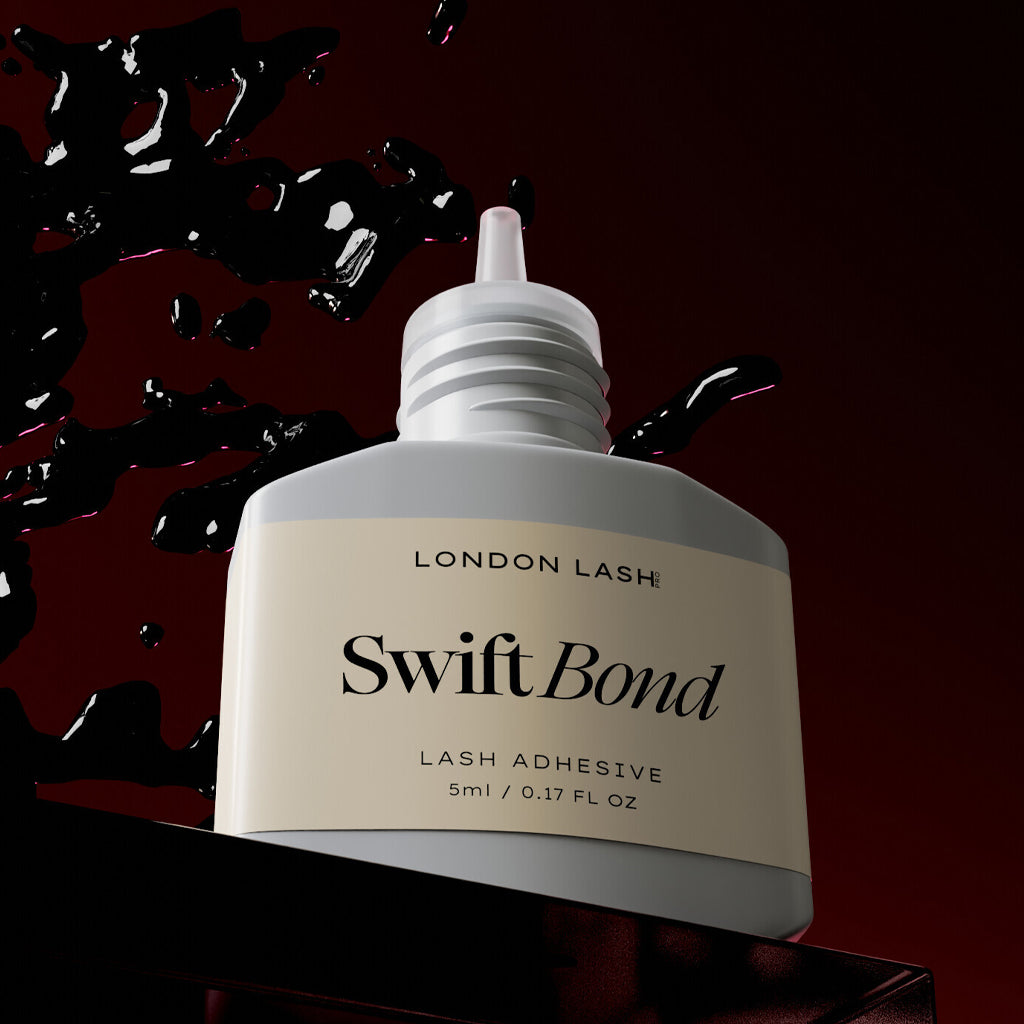New In
Glues & Liquids
Lashes
LASH LIFT
Dolla Nails Pro
Online Training
Save up to 57% off
Glue Trouble? 6 Pro-Tips for Perfect Glue Care
May 27, 2021 4 min read

Lash Adhesive Issues? Say No More!
Lash adhesive is the backbone of your craft, so mastering its use and ensuring its longevity is crucial for your success as a lash artist! Discovering the right adhesive is akin to the moment Prince Charming found that Cinderella perfectly fit the glass slipper. But sometimes, your lash adhesive might act up. Is it you or the lash glue? How can you discern? How can you remedy it?
Here are some steps that you can follow to ensure your clients have the best lash retention and make your life as a lash tech much easier. Some of these might seem straightforward, but it's often the simple things that we overlook. So, bear with us!

1. Avoid Bulk Buys!
A frequent misstep is buying lash glue in bulk. We know how tempting it is, especially during sales. Who can resist a good deal? But pause and reflect! How many clients do you serve in a month? Are you switching out your eyelash glue every 3 or 4 weeks? This will guide your purchasing decisions - stick to what you'll use within 3 months. It's such a letdown to open a bottle of lash adhesive, only to find it's turned thick and gloopy because you bought a year's supply during a sale, and it sat unused. The savings will either go towards replacing those bottles or compensating clients for infills. From our experience, having 2-3 unopened adhesive bottles on hand is just right.

2. Monitor Your Expiration Dates!
It's a given that before opening, eyelash glue has a 6-month shelf life from the date on the bottle and its packaging; this is the adhesive's production date and also serves as the batch number. If you’re unsure about your London Lash date of production, feel free to reach out to us about your adhesive, and we'll identify the batch.
We receive a fresh batch of lash glue every 1-2 months, which guarantees that when you lash glue arrives at your door, you can get the most out of it. We also go to great lengths to ensure our adhesives are moisture-free and temperature-regulated. Once in your hands, how do you maintain its quality?
Post-opening, your eyelash glue will have a shelf life of up to 6-8 weeks, but for optimal lash retention, consider replacing it every 4-6 weeks. Time flies, especially in a bustling salon. To easily track this, take a piece of tape and label your adhesive with the opening date. This acts as a reminder to reorder when the time comes.

3. Understand Your Workspace Conditions!
Ah, summer! We eagerly await its return for the sunny days, barbecues, and warm evenings. However, there are some drawbacks that could compromise your sunny mood. Unfortunately, the rising temperatures and humidity can make your lash adhesive act out!

Believe it or not, your workspace conditions significantly influence your lash adhesive. Changes in temperature and humidity can make or break a lash set. We often feel temperature changes more than humidity shifts. When it gets hot, our instinct is to cool down, but using methods to cool down can impact humidity. Opening a window might increase humidity, accelerating adhesive drying, while air-conditioning can reduce humidity, slowing the drying time of your lash glue. On the other end of the spectrum, in winter, using your radiator can cause the air to become dry, slowing your adhesive.
TOP TIPS - How to Boost Humidity!
- Consider a humidifier. Some even allow for essential oils, which can add a luxurious touch to your lash studio.
- Moisten your eyepatches with water using a microfiber brush.
- Apply Primer in sections to keep lashes damp.
- A hygrometer can help monitor your workspace's conditions.
4. Proper Dispensing and Usage
Generally speaking, you should refresh your adhesive drop every 15-20 minutes during treatment. Each time you dispense a new drop, make sure you thoroughly mix the adhesive ingredients by shaking before each use. So, what happens if you don’t shake it thoroughly enough? From the image below, you can see that your lash glue consists of ingredients that need to mix in order for the lash glue to work at it’s best.

The easiest way to spot that you didn’t shake your lash glue enough? An inadequately mixed adhesive will appear translucent instead of a deep black.
For efficient mixing, use an adhesive shaker. It’s a lash-saver! It saves time and ensures consistency each and every time. Did you know that shaking glue in a glue shaker for just 15 seconds can save you nearly a minute of manual shaking? This gives you more time for lashing!

5. Maintain Adhesive Cleanliness!
After shaking and dispensing, a quick wipe might seem enough. But adhesive nozzles can release trapped air, known as ‘burping’, which is when it spits out any air left in the nozzles, sending out remnants of lash glue with it; this causes the adhesive remnants to stick the nozzle to the cap. To prevent this:

- Remove the cap while shaking. When manually shaking, covering the nozzle with a wipe will ensure that lash glue will be contained to the wipe, and not everywhere else in your lash room!
- Don’t squeeze! Let gravity do the work when dispensing by tipping the up. Although this may take longer, your lash glues air intake will be reduced.
-
Tap the bottle's bottom before recapping to release trapped air. After this, wipe away the excess glue, and replace your lid.
- Always have a glue rescue kit on hand. Sometimes, despite your best efforts, the nozzle and the lid can stick together. It's always a good idea to have some spares in your kit to avoid any potential inconvenience. This can be a lifesaver!
6. Proper Lash Adhesive Storage
Storing your adhesive correctly is paramount. Ensure it's:
- Stored upright.
- Kept in a cool, dry place.
- Away from heat sources.
- Shielded from direct sunlight.
For the best results, keep your glue in an airtight container.

Remember, never store opened adhesive in a fridge. The temperature shift causes condensation to build up inside and outside of the bottle, which can ruin the adhesive as it will begin to cure. However, unopened adhesive can be refrigerated, but let it acclimate to room temperature for at least 2 hours before use.
Unsure about the right adhesive for you? We've created a comprehensive adhesive chart with all of our adhesives to guide your choice. Questions? We're here to assist! Drop us an email at support@uslash.com, and we'll help you find your ideal adhesive!
Check out these featured products
Subscribe
Sign up to get the latest on sales, new releases and more …




















